Updated: 14-Sep-2020
(Today Samara-Trud, see also KKBM).
The full name of OKB Kuznetsov Design Office is Nikolai Dimitriyevich Kuznetsov.
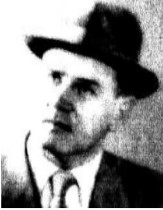
“Nikolai Kuznetsov”
-He collaborated with Klimov at GAZ-16. Currently his office is known as KKBM.
-As we will see there are two lines of Kuznetsov engines: that of turbojet engines and that of rocket engines, sometimes with identical references.
-The N.D. Kuznetsov Design Office for turbine engines, was founded in Samara in 1946.
- It was known as "State Research and Production Enterprise, Labor".
-With the support of German technicians brought to the end of WWII and with Ferdinand Brandner among them, he started the NK-2 that was one of the first turbines built in the USSR and was a direct derivative from the Jumo-022.
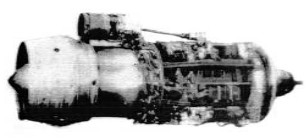
“Photograph of a TV-2”
-The exhaust pipe is on the left and the propeller shaft on the right.
-From from this engine came the turboshaft variant TV-2 of 7,500 CV.
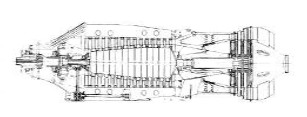
“Schematic drawing for the TV-022 (with Jumo-022 base)”
The TVD 2 TV-2F was a double TV-2 version that gave 12.000 CV to the shaft with two contra-rotating propellers.
-Below we show a diagram of this double installation of two coupled engines through an important gearbox.
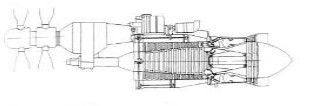
“Double TV-2F”
After having built a couple of hundreds of NK-4 engines, Ivchenko took over responsibility, renaming it AI-20.

“NK-4 design”
-The NK-6 of 1959 was a turbofan that was designed for supersonic bombers.
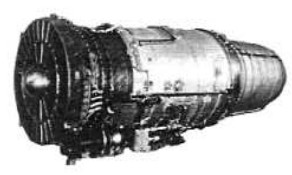
“NK-8-2, without reverse”
-An important engine was the NK-8 turbofan from 1967 with 21,000 lbf of thrust. The NK-8-1 version has already been installed on the Il-62 and Il-76.
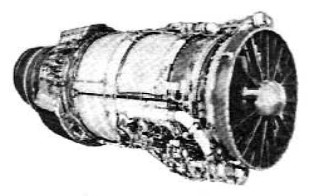
“NK-8-2, with reverse”
-The NK-8-2 version was from 1973, and was intended for the Tu-154.
Above, it is shown without and with reverse.
-The more-empowered NK-8-4 reached 23,000 lbf of thrust. These engines, when applied to commercial aircraft, are distinguished by their pneumatic start through compressed air produced by the APU type TA-6.
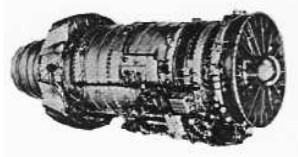
“NK-8-4, with reverse”
-The NK-8-6 from 1980 was the NK-86 used on the Il-86.
-In numerical order, the NK-12 was designed in 1958 by the NK team but with strong intervention from Brandner.
-It was used on the An-22 and Tu-114, great aircraft of the time, and the NK-12 was the most powerful turboprop engine in the world, with 15,000 CV for the latest models -MV and -MA.
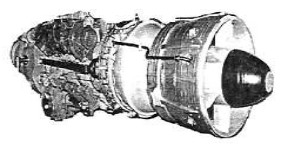
“NK-12, viewed from the exhaust outlet”
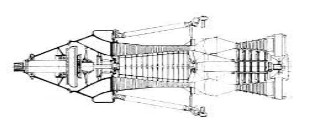
“NK-12 schematic drawing”

“Photograph of the NK-12”
-The NK-12ST versions were used for large pipelines as gas transfer pumps, using the same fuel they pumped through the pipes. That also happened with the NK-16ST, the NK-36ST and the NK-38ST.
There were great problems with the engine's gearboxes that were installed on aircraft, due to the intense work to which they were subjected. Apart from reducing the rpm, they divided the transmission for two contra-rotating propellers of an enormous size.
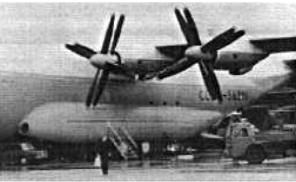
“An-22”
-These engines were also mounted on long-distance patrol aircraft such as the Tu-96 (military version of the Tu-114).
-They had double, four-blade propellers that in the case of the Tu-96 rotated at only 750 rpm but with a tremendous pitch angle. It is striking to see this plane advancing at more than 800 km/hr. with the rotating propellers in the movie "Ice Station Zebra".
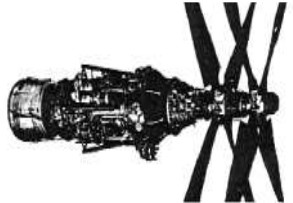
"Kuznetsov NK-12 with propellers"
It has a 14-stage compressor, 12 cannular combustion chambers, and a 5-stage turbine.
-The diameter of the propellers reached 6 meters. Hence the low rotation speed because the blade tips should not pass the speed of sound, unless the affected section had the appropriate profile.
-The 1973 NK-22 was used on the Tu-22M2 with turbofan and afterburner.
-The Kuznetsov NK-25 turbojet was used on the Tu-22M3.
-The NK-37 is coupled to a large 25 MW generator for local power plants.
-The NK-44 engine is a powerful turbofan.
-The NK-86 is a 28,600 lbf turbofan very close to the philosophy of the NK-8. This engine is from 1980. See NK-8-6.
-This engine has been mounted on the Il-86 with sound reducers and reverses.

“NK-86”
-The NK-88 from 1988 was a trial to use liquid hydrogen as fuel.
-It did not advance, because the necessary cryogenic installation - it was mounted on a Tu-155 - did not make it practical.
-The NK-89 was also an experimental engine.
Normally it gave 10,500 kgf of thrust. But it was tested on a Tu-155 with liquid natural gas.
-On a Tu-156 it was tested with LNG + kerosene.
-In the last decade of the twentieth century appeared the NK 92 turbofan, which was destined for the Il-90. It delivered 177 Kn of thrust.
-The Kuznetsov NK-93 turbofan, which was being tested on the Kazan Motor Building Prod. (KMBP), was still more powerful.
-It delivered 18,000 Kgf of thrust and was intended for the Tu-204, -214 and -330 aircraft. (see Motorostroitel).
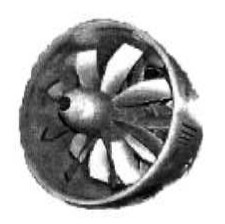
“NK-93”
-The NK-135 was proposed for the 135P. The important NK-144, derived from the NK-8 is the engine that is used by the Russian SST, the Tu-144 and also the Tu-26 supersonic bomber.
-Further there is the NK-321 that delivered 22,950 kgf of thrust and was intended for the Tu-160.
-The other side of N.D. Kuznetsov is the construction of rocket engines. From his OKB-276.
-When Glushko told Korolev that he had no intention of developing cryogenic-fuel-type rocket engines for the R-9 missiles and the N-1 project, he turned to Kuznetsov.
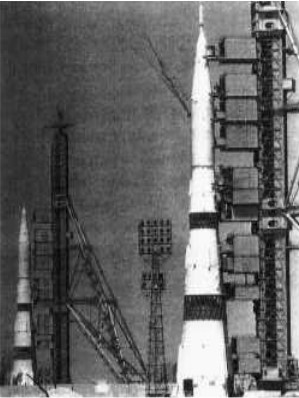
“Two N-1 rockets”
-The N-1 carrier vehicle belonged to the Russian program of reaching the Moon. Successive failures caused the project to be abandoned in 1974. We see two N-1 at Baikonour. They were 105 meters high in the L-3 version (The Saturn V reached 111 meters high).
-The manufacturing trajectory of Kuznetsov rocket engines since 1962 has been dedicated to the different engines of the N-1 project stages. Previously Kuznetsov only made two engines for the GR-1.
-They are the NK-9 and NK-9V. They were built from 1959 to 1965 and delivered 45 tons of thrust. The first was in a cluster of 4 engines in the first stage, giving 140 tons. The other engine was in the second stage.
-The first engine, bound for the N-1 was the NK-15 (11D51). It was derived from the NK-9, and delivered 157 tons. It was in Block 1 (stage 1) but in the amount of thirty! engines Although it seems logical.

“NK-15”
-The NK-15V was used in the second stage and gave 168 tons of thrust. For the third stage the 45-tons NK-21 was made. These two engines and the NK-9V were high-altitude engines.
-For the fourth stage the 40-ton NK-19 was manufactured.
-The N-1F version of the Russian lunar project was made, so the fourth stage had the NK-31, which was built from 1970 to 1974. and delivered 45 tons. It was derived from the NK-19.
-The first stage of the N-1F used the NK-33 that was derived from the NK-15. It gave 154 tons of thrust.

“NK-33”
-NK-39 engines were used in the third stage of the N-1F. They delivered 41 tons. The NK-43 (11D112) that delivered 180 tons and was the most powerful, went in the second stage.
-All Kuznetsov engines that have been mentioned so far, were running on LOX-kerosene liquid fuel.
-But an NK-15V was tested using LOX and LH2, which reached 200 tons of thrust, to be used in the N-1 concept, although it was not done.
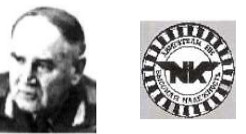
“N. D. Kuznetsov y logo”
-Below an extension on the rocket engines that had been prepared in the main text and that is complementary to the information reported here.
-In addition to the usual jet engines, Kuznetsov also made rocket engines like the ones listed below.
-The Kuznetsov engines were aimed at the big N-1 rocket, the Russian counterpart of the American Saturn V project.

“Transfer of the huge N-1”
-Due to lack of agreement between the Glushko team that had to build the engines and Korolev, the author of the N-1 Rocket, the latter decided to pass the order to produce the engines to Kuznetsov.
-Kuznetsov started with the NK-15 (11D51) in several versions that failed, such as the improved NK-15V (11D52) including the NK-15V-H2 that replaced the previous ones also failed.
-The NK-19 was made for the upper stages (11D54). Later it would be the NK-9V.
-The same counts for the NK-21 (11D53) that was replaced by the NK-9V.
-The NK-31 (11D114) was for N-1F's 4th stage, running on LOX and Kerosene.
-The NK-33 (11D111) was used in the N-1A's first stage.
-The NK-33 modified with LH2 / LOX was the one with 16 outer + 4 center engines. They would be insufficient as we see in the following photograph in which there are 24 and 6 engines.
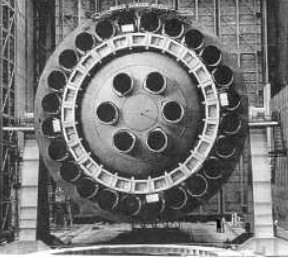
“Size of the N-1, see people below”
-After several failures the NK-39 (11D113) appears, which runs on LOX / kerosene, to replace the NK-33.
-The NK-43 (11D112) is an NK-33 version with long nozzles for high altitudes.
-The NK-9 and NK-9V would be used in the different stages of the R-9 and GR-1 (2nd stage). They used LOX / Kerosene.
-The NK-9V (11D53) (NK-21) was fitted on the N-1 in the 3rd stage (Blok V).
-And the NK-9V (11D54) (NK-19) was for the N-1's 4th stage.
From Appendix 9: Below we show a new photograph of the NK-33. It is a derivative of the NK-15 and NK-15V and in turn it has its own derivative, the NK-43.
-These engines use LOX liquid oxygen and rocket kerosene, RP-1, as fuel.
-The NK-33 is lightweight for the power it delivers. They - especially the NK-43 - were destined to the frustrated moon rocket N-1.

“Kuznetsov NK-33/43”
A list of Kuznetsov rocket engines can be as follows:
11D111 (NK-33), 11D112 (NK-43), 11D113 (NK-39), 11D114 (NK-31), 11D51 (NK-15), 11D51F, 11D51M, 11D52F, 11D52M, 11D52V (NK.15V), 11D52VM (NK-15VM), 11D53 (NK-9V), 11D53F, 11D53M, 11D54 (NK-9V and NK-19).

“NK-15 from the NK-19” (PiP=mw)

“NK-15” (PiP=mw)
-And starting with the initials NK, by N. Kuztesov:
el NK-15, NK-15F, NK-15V, NK-15VM (NK-35), NK-19, NK-19V, NK-21, NK-31, NK-33, NK-33 LH2 (y 4 Lace base NK-9), NK-35 (NK-15VM), NK-39, NK-43, NK-9, NK-9V (11D53), NK-9V (11D54).
From “Airventure.de”we show a magnificent photograph of the NK-12 viewed from the side of the shafts for the contra-rotating propellers. (PiP)
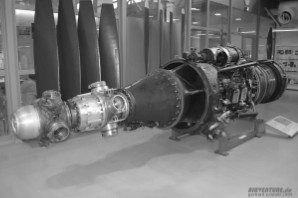
“Kuznetsov NK-12” (PiP)
-The modern NK-93 is a turbofan with two contra-rotating fans.

“NK-93 scale model”

“View of the double fan without fairing”
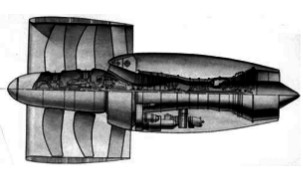
“NK-93 double-fan cutaway”
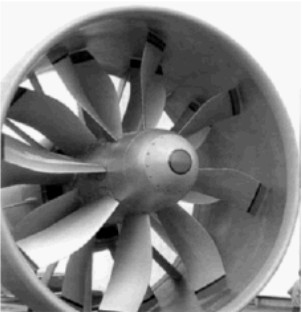
“View of the real NK-93 engine”
-The main difference of the fan is that it does not have as many blades as the typical ones, but it rather looks like some kind of multi-bladed propeller.
NOTE = More information at <austronautix.com> and <eureka.com>
From Appendix 12: The NK-33 rocket engine has several versions.
-But the two most visible are the engine with normal nozzle and the one with the retractable nozzle for high altitudes.
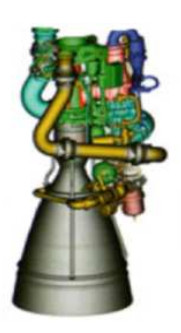
"With normal nozzle for early stages"
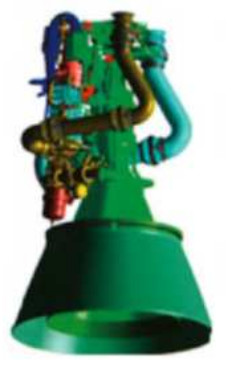
“Retractable nozzle with extendable skirt for high altitudes”
Engines of KUZNETSOV
Model: NK-12
Arquitecture:
Compressor/s:
Combustion chambers:
Turbines:
Power / Thrust: / ---
Weight:

"Kuznetsov NK-12, exhaust side"
Model: NK-135
Arquitecture:
Compressor/s:
Combustion chambers:
Turbines:
Power / Thrust: / ---
Weight:
Model: NK-15 (11D51), -F
Arquitecture:
Chambers:
Fuels:
Feed System:
Ignition:
Thrust:
Weight:

"Kuznetsov NK-15"
Model: NK-15 N1F (11D51F) (11D52F)
Arquitecture:
Chambers:
Fuels:
Feed System:
Ignition:
Thrust:
Weight:
Model: NK-15 N1M (11D51M) (11D52M)
Arquitecture:
Chambers:
Fuels:
Feed System:
Ignition:
Thrust:
Weight:
Model: NK-15V (11D52V)
Arquitecture:
Chambers:
Fuels:
Feed System:
Ignition:
Thrust:
Weight:
Model: NK-15VM (11D52VM) (NK-35)
Arquitecture:
Chambers:
Fuels:
Feed System:
Ignition:
Thrust:
Weight:
Model: NK-16
Arquitecture:
Chambers:
Fuels:
Feed System:
Ignition:
Thrust:
Weight:
Model: NK-19 (11D54) (NK-9V)
Arquitecture:
Chambers:
Fuels:
Feed System:
Ignition:
Thrust:
Weight:
Model: NK-2
Arquitecture:
Compressor/s:
Combustion chambers:
Turbines:
Power / Thrust: / ---
Weight:
Model: NK-21 (NK-9V) (11D53)
Arquitecture:
Chambers:
Fuels:
Feed System:
Ignition:
Thrust:
Weight:
Model: NK-231
Arquitecture:
Chambers:
Fuels:
Feed System:
Ignition:
Thrust:
Weight:
Model: NK-31 (11D114)
Arquitecture:
Chambers:
Fuels:
Feed System:
Ignition:
Thrust:
Weight:
Model: NK-32, -LH2 Mod., +4xLACE·
Arquitecture:
Chambers:
Fuels:
Feed System:
Ignition:
Thrust:
Weight:
Model: NK-321
Arquitecture:
Compressor/s:
Combustion chambers:
Turbines:
Power / Thrust: / ---
Weight:
Model: NK-33 (11D111) (14D15)
Arquitecture:
Chambers:
Fuels:
Feed System:
Ignition:
Thrust:
Weight:

"Kuznetsov NK-33 with normal nozzle for first stages"
Model: NK-35
Arquitecture:
Chambers:
Fuels:
Feed System:
Ignition:
Thrust:
Weight:
Model: NK-36
Arquitecture:
Chambers:
Fuels:
Feed System:
Ignition:
Thrust:
Weight:
Model: NK-37
Arquitecture:
Chambers:
Fuels:
Feed System:
Ignition:
Thrust:
Weight:
Model: NK-38
Arquitecture:
Chambers:
Fuels:
Feed System:
Ignition:
Thrust:
Weight:
Model: NK-39 (11D113)
Arquitecture:
Chambers:
Fuels:
Feed System:
Ignition:
Thrust:
Weight:
Model: NK-4
Arquitecture:
Compressor/s:
Combustion chambers:
Turbines:
Power / Thrust: / ---
Weight:
Model: NK-43 (11D112)
Arquitecture:
Chambers:
Fuels:
Feed System:
Ignition:
Thrust:
Weight:
Model: NK-44, NK-144
Arquitecture:
Chambers:
Fuels:
Feed System:
Ignition:
Thrust:
Weight:
Model: NK-6
Arquitecture:
Compressor/s:
Combustion chambers:
Turbines:
Power / Thrust: / ---
Weight:
Model: NK-8, -86, -88, -89
Arquitecture:
Compressor/s:
Combustion chambers:
Turbines:
Power / Thrust: / ---
Weight:

"Kuznetsov NK-8-2, with reverse"
Model: NK-86
Arquitecture:
Compressor/s:
Combustion chambers:
Turbines:
Power / Thrust: / ---
Weight:
Model: NK-88
Arquitecture:
Compressor/s:
Combustion chambers:
Turbines:
Power / Thrust:
Weight:
Model: NK-9, -V (11D53) (11D53F) (11D53M) (11D54)
Arquitecture:
Chambers:
Fuels:
Feed System:
Ignition:
Thrust:
Weight:
Model: NK-92
Arquitecture:
Compressor/s:
Combustion chambers:
Turbines:
Power / Thrust: / ---
Weight:
Model: NK-93
Arquitecture:
Compressor/s:
Combustion chambers:
Turbines:
Power / Thrust: / ---
Weight:

"Kuznetsov NK-93 cutaway"
Model: TV-2
Arquitecture:
Compressor/s:
Combustion chambers:
Turbines:
Power / Thrust: / ---
Weight:

"Kuznetsov TV2"


